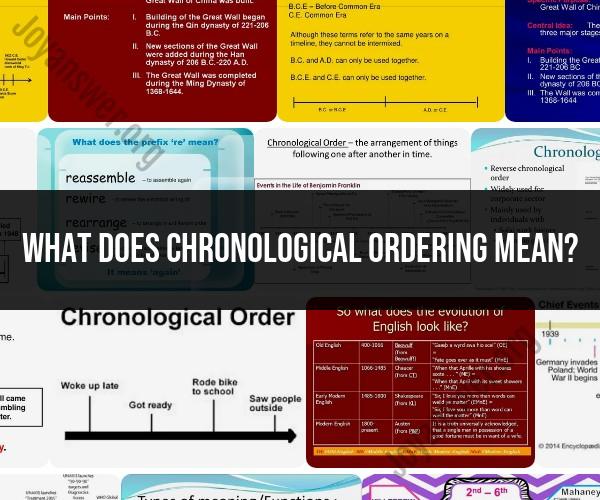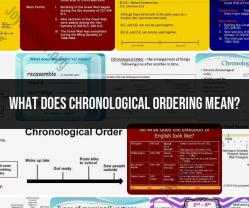What does chronological ordering mean?
Chronological ordering, also known as chronological order, refers to the arrangement or organization of events, actions, or information in a sequence according to the order in which they occurred in time. It involves presenting these events or pieces of information in a linear fashion, starting from the earliest or first occurrence and proceeding to the most recent or last occurrence. This method of ordering is used to create a clear and logical timeline that allows readers or audiences to follow the progression of events or the development of a narrative in a straightforward manner.
Key points to understand about chronological ordering:
Sequential Progression: Events are presented in the same order in which they happened, with no deviation or rearrangement in the timeline. This approach helps maintain a coherent and logical flow.
Time-Based Signposts: Chronological ordering often involves the use of time-related markers, such as dates, years, time of day, or temporal cues (e.g., "next," "then," "later"), to guide readers through the timeline.
Historical and Factual: This ordering method is frequently used in historical accounts, biographies, autobiographies, news reports, and other types of writing or communication where the accurate sequence of events is crucial.
Cause-and-Effect Relationships: By presenting events in chronological order, it becomes easier to establish and understand cause-and-effect relationships, demonstrating how earlier events led to subsequent ones.
Clarity and Coherence: Chronological ordering provides clarity and coherence to a narrative or informational piece, making it easier for readers or audiences to follow and comprehend.
Overall, chronological ordering is an effective way to convey a sense of progression, history, or development in a story or presentation. It helps ensure that events are presented in a logical and easily digestible manner, aiding in the understanding of complex timelines or historical narratives. However, not all forms of communication use chronological ordering; other organizational structures, such as spatial, thematic, or narrative structures, may be employed based on the specific goals and content of the communication.






